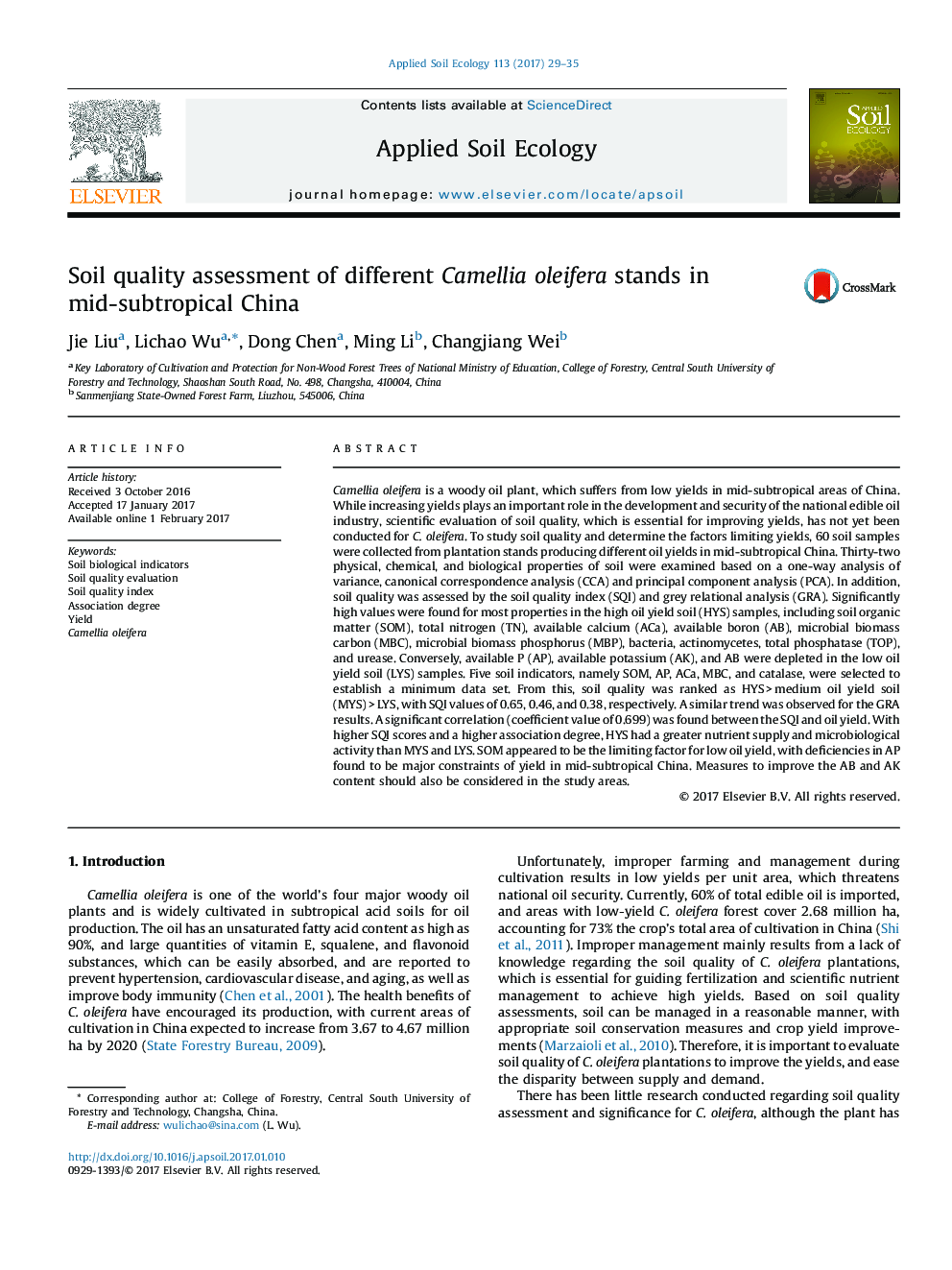| کد مقاله | کد نشریه | سال انتشار | مقاله انگلیسی | نسخه تمام متن |
|---|---|---|---|---|
| 5742732 | 1617770 | 2017 | 7 صفحه PDF | دانلود رایگان |

- Camellia oleifera is in the state of low yield due to improper soil management.
- High tea oil yield soils have high values on most soil properties.
- Soil organic matter appeared to be the limiting factor for low oil yield.
- Deficiencies in available phosphorus may be the major constraints of yield.
Camellia oleifera is a woody oil plant, which suffers from low yields in mid-subtropical areas of China. While increasing yields plays an important role in the development and security of the national edible oil industry, scientific evaluation of soil quality, which is essential for improving yields, has not yet been conducted for C. oleifera. To study soil quality and determine the factors limiting yields, 60 soil samples were collected from plantation stands producing different oil yields in mid-subtropical China. Thirty-two physical, chemical, and biological properties of soil were examined based on a one-way analysis of variance, canonical correspondence analysis (CCA) and principal component analysis (PCA). In addition, soil quality was assessed by the soil quality index (SQI) and grey relational analysis (GRA). Significantly high values were found for most properties in the high oil yield soil (HYS) samples, including soil organic matter (SOM), total nitrogen (TN), available calcium (ACa), available boron (AB), microbial biomass carbon (MBC), microbial biomass phosphorus (MBP), bacteria, actinomycetes, total phosphatase (TOP), and urease. Conversely, available P (AP), available potassium (AK), and AB were depleted in the low oil yield soil (LYS) samples. Five soil indicators, namely SOM, AP, ACa, MBC, and catalase, were selected to establish a minimum data set. From this, soil quality was ranked as HYSÂ >Â medium oil yield soil (MYS)Â >Â LYS, with SQI values of 0.65, 0.46, and 0.38, respectively. A similar trend was observed for the GRA results. A significant correlation (coefficient value of 0.699) was found between the SQI and oil yield. With higher SQI scores and a higher association degree, HYS had a greater nutrient supply and microbiological activity than MYS and LYS. SOM appeared to be the limiting factor for low oil yield, with deficiencies in AP found to be major constraints of yield in mid-subtropical China. Measures to improve the AB and AK content should also be considered in the study areas.
Journal: Applied Soil Ecology - Volume 113, May 2017, Pages 29-35